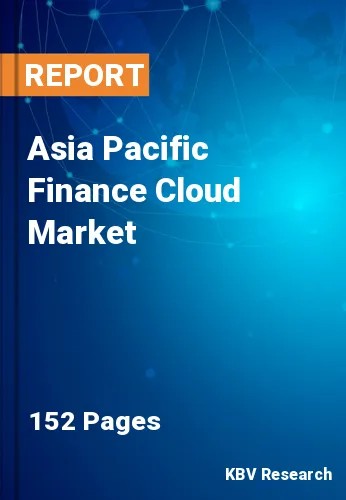The Asia Pacific Finance Cloud Market would witness market growth of 21.5% CAGR during the forecast period (2022-2028).
Aside from the financial consideration, managing firewalls, web servers, and intranets to work with other teams require a tremendous amount of time and resources. To ensure security standards are being met, users need an IT team. When customers use cloud-based financial automation software, the duty of compliance is outsourced to the supplier
Financial institutions all over the world are adopting the cloud, driven by competition from forward-thinking, born-in-the-cloud FinTech startups as well as by consumer demand for more effective, customer-centric services. Financial organizations, however, need to carefully collaborate with public cloud providers to properly manage security, governance, and compliance needs as a highly regulated industry that handles some of the most sensitive personal information.
Banks need to start developing plans today to assist them to get ready for the future as they deal with shifting consumer expectations, evolving technologies, and alternative business models. C-suite executives, board members, and chief information officers are increasingly focusing on cloud computing. Banks and other financial services organizations may keep their data and applications in the cloud and use cutting-edge software there, according to leaders in the banking and capital markets, who are starting to realize that the cloud is more than simply technology.
As a result, the country is predicted to have a significant demand for smart finance technologies. The BFSI industry in India is anticipated to be the third-largest by 2025. In India's banking system as of September 2019, there were 94,384 rural cooperative banks, 1,542 urban cooperative banks, 22 private sector banks, 53 regional rural banks, and 46 foreign banks. Public sector banks accounted for 61.21 percent of all banking assets in FY19. In the fiscal year 2019, the total assets of the public and private financial industries were $1,422.97 billion and $741.79 billion, respectively.
The China market dominated the Asia Pacific Finance Cloud Market by Country in 2021, and would continue to be a dominant market till 2028; thereby, achieving a market value of $5,847.4 million by 2028. The Japan market is estimated to grow a CAGR of 20.8% during (2022 - 2028). Additionally, The India market would experience a CAGR of 22.3% during (2022 - 2028).
Based on Offering, the market is segmented into Solution (Security, Financial Reporting & Analysis, Financial Forecasting, Governance, Risk & Compliances, and Others.) and Services. Based on Deployment, the market is segmented into Public, Private, and Hybrid. Based on End-use, the market is segmented into Banking & Financial Services and Insurance. Based on Organization Size, the market is segmented into Large Enterprises and Small & Medium Enterprises (SMEs). Based on Application, the market is segmented into Wealth Management, Account Management, Revenue Management, Customer Relationship Management, Asset Management, and Others. Based on countries, the market is segmented into China, Japan, India, South Korea, Singapore, Malaysia, and Rest of Asia Pacific.
Free Valuable Insights: The Worldwide Finance Cloud Market is Projected to reach USD 68.8 Billion by 2028, at a CAGR of 20.5%
The market research report covers the analysis of key stake holders of the market. Key companies profiled in the report include IBM Corporation, Google LLC, Microsoft Corporation, Oracle Corporation, SAP SE, Amazon Web Services, Inc., Cisco Systems, Inc., The Sage Group PLC, Acumatica, Inc., and Aryaka Networks, Inc.
By Offering
By Deployment
By End-use
By Organization Size
By Application
By Country
Our team of dedicated experts can provide you with attractive expansion opportunities for your business.

